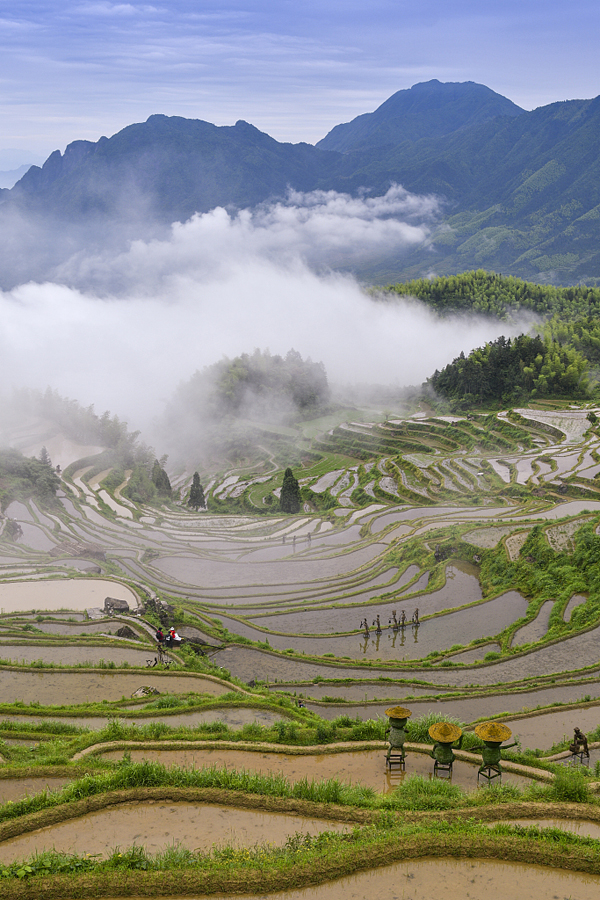Yunhe, beyond the terraces
Terraces are strip-shaped fields built along the contours of a hill. They usually help control soil erosion, but for one small county in east China, these undulating sections have been the reason for its fame among travelers.
The scenery in Yunhe, east China's Zhejiang Province, is serene and idyllic, enriched by the layers of platforms that adorn its highlands.
Located five kilometers away from the county seat, the Yunhe terraces first came into existence in the early Tang Dynasty (618-907) and flourished in the Yuan (1271-1368) and Ming (1368-1644) dynasties, making them over 1,000 years old. They are present at an altitude ranging between 200 and 1,400 meters and a vertical height of 1,200 meters and span mountains, hills and valleys, with a maximum of 700 layers.
Members of the She ethnic group who migrated from southeast China's Fujian Province were the earliest farmers who made use of this place. With hoe sickles, they cut shrubs and thorns on the mountains, removed gravel in high and low slopes, and designed these terraces piece by piece.

The Yunhe terraces, Zhejiang Province, China. /CFP
Now, the largest group of terraced fields in east China has become a calling card for Yunhe County, which made it to a CNN list of the 40 beautiful places to visit in China.
In recent years, with more efforts placed on ecological conservation and establishing a harmonious coexistence between man and nature, these stratified fields have gained more prominence.
In 2019, the Yunhe terraces were rated as a national wetland park. In 2020, they successfully passed the landscape quality assessment of the Ministry of Culture and Tourism, becoming the 22nd scenic spot of 5A level, the highest class in the country's categorization of its natural attractions.

The Yunhe terraces, Zhejiang Province, China. /CFP
In 2021, the county began the construction of a "cloud intelligent control" system for wetland protection, and established a network to monitor its microclimate, bird population, vegetation and biodiversity. Staff as well as drones patrol the premises and an early warning system for disaster prevention and mitigation has been put into operation to better manage these precious strips of land.

 Lishui establishes intelligent biodiversity monitoring system
Lishui establishes intelligent biodiversity monitoring system New fungus species discovered in Qingyuan
New fungus species discovered in Qingyuan Lishui transforms weirs to aid fish migration
Lishui transforms weirs to aid fish migration